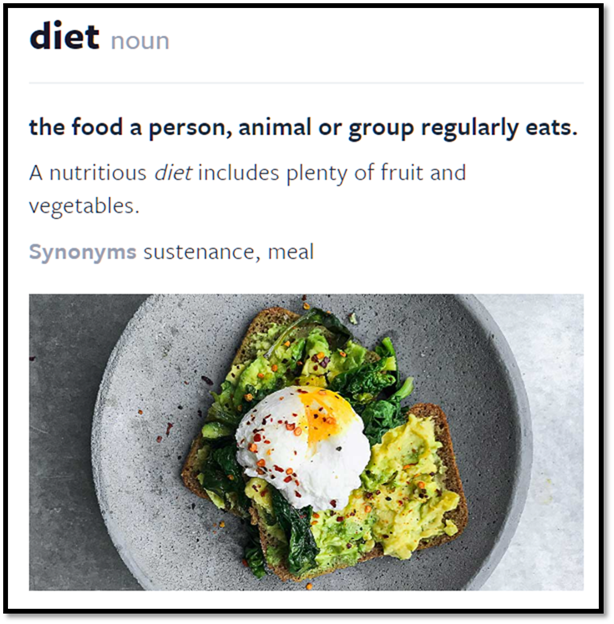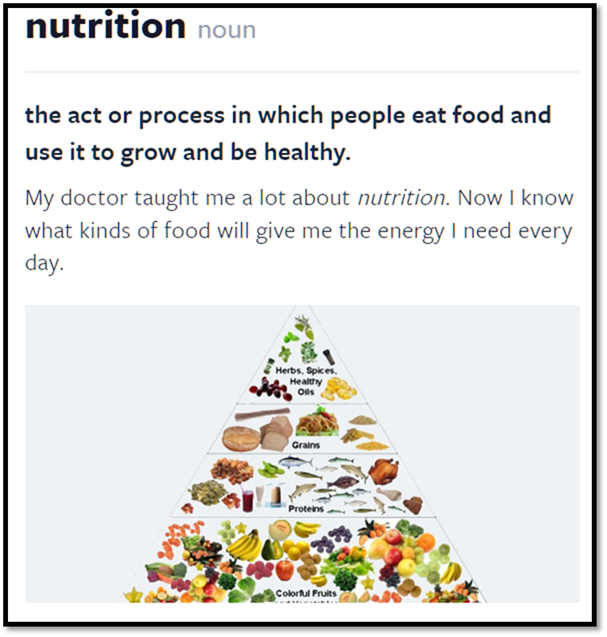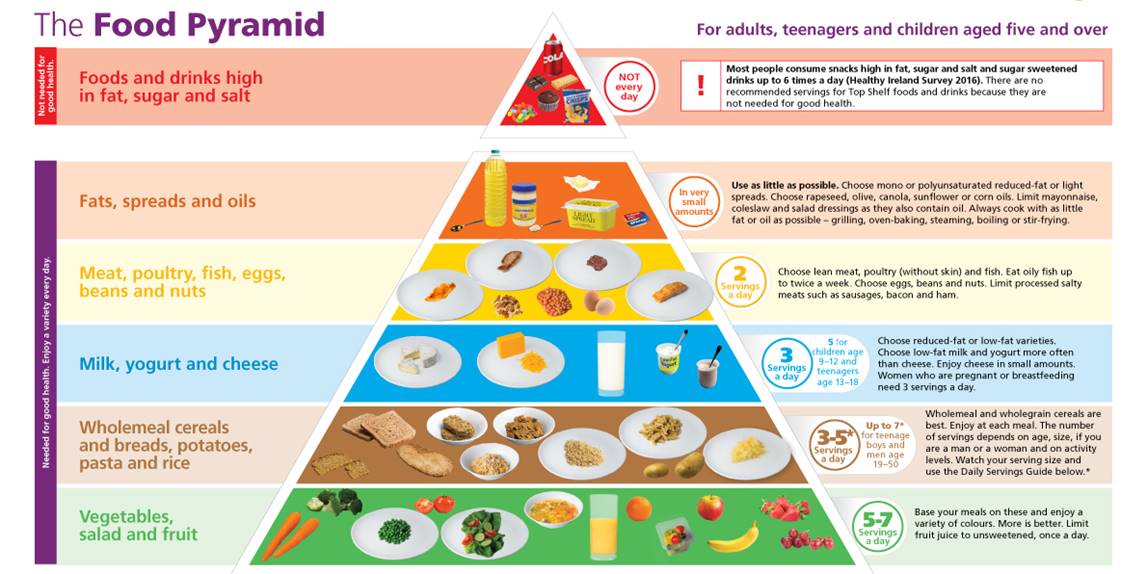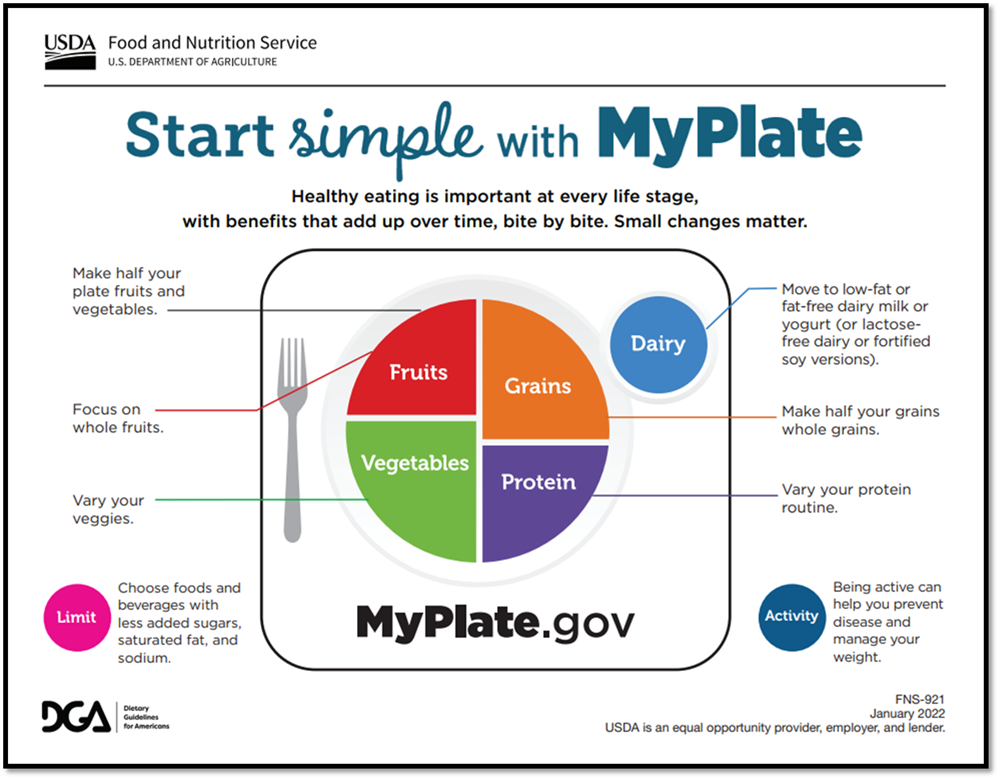
A Variety of Diets
Learning Objectives
·
Identify
a variety of diets (e.g., typical American, Mediterranean, vegetarian, vegan).
·
Compare
and contrast diverse diets (e.g., typical American, Mediterranean, vegetarian,
vegan).
·
Create
or modify a personal wellness plan (i.e., goals and action steps based on
current guidelines) for healthy eating to meet current and future needs
Introduction to Nutrition and Health
Understanding the profound effect of our dietary choices is crucial in the
journey to optimal health and wellness. Proper nutrition is pivotal in
promoting optimal growth, ensuring dental health, preventing high blood
pressure, and reducing the risk of chronic diseases, obesity, and osteoporosis.
This unit will explore various dietary patterns, their influences, and how
making informed choices can lead to a healthier life.
(It is important to clarify that "diet" can have
different meanings. For the purposes of this unit, when we refer to a diet, we
are talking about the food and drinks that are regularly consumed, aiming for a
balanced and nutritious lifestyle, not a temporary regimen for weight loss.)

Image
provided by Flocabulary.
Influences on Dietary Choices
Diets and food preferences do not exist in a vacuum; many factors influence
them, including culture, religion, geographic location, food availability,
health concerns, and personal choice. Understanding these factors can help in
making more informed and healthier food choices. Below are important terms to
understand about the following diets.

Image
provided by Flocabulary.
A food group is a
category of foods that share similar nutritional properties. Foods are grouped
together based on the main nutrients they provide, and each group plays a
unique role in contributing to a balanced and healthy diet. There are generally
five main food groups:
1.
Vegetables: This group includes all types of
vegetables, ranging from leafy greens to starchy vegetables. They are rich in
vitamins, minerals, fiber, and antioxidants.
2.
Fruits: Fruits provide essential nutrients
such as vitamins, minerals, and fiber. They are usually a good source of
vitamin C and potassium.
3.
Grains: This group includes foods made from
wheat, rice, oats, cornmeal, barley, or other cereal grains. Grains are divided
into two subgroups: whole grains and refined grains. Whole grains contain the
entire grain kernel and are more nutritious.
4.
Protein Foods: Foods in this group are important
sources of protein, and include meat, poultry, fish, beans, peas, eggs, nuts,
seeds, and soy products.
5.
Dairy: This group comprises milk, yogurt,
cheese, and other milk-based foods. Dairy products are primary sources of calcium,
vitamin D, and other essential nutrients.
6.
Oils: Although not a food group on its own
in some classifications, oils are highlighted for their essential fatty acids
and vitamin E. They include fats from many different plants and fish.
Click the image
above for an Interactive Food Group Gallery.
Each food group offers different nutrients, so it's important
to eat various foods from all the groups to get a range of nutrients and
maintain a balanced diet.

The Dietary Guidelines
Recommendations refer to evidence-based guidelines designed to help people
choose a healthy diet that meets their nutritional needs while reducing their
risk of chronic diseases. These guidelines are typically updated every five
years by health and nutrition experts based on the most current scientific
evidence about food and nutrition.
Key points about the Dietary Guidelines Recommendations
include:
1.
Comprehensive Guidance: The recommendations cover all
aspects of a healthy diet, including which types of foods to eat more of, which
types to eat less of, and what to consider for different life stages and health
conditions.
2.
Promote Overall Health: The main goal of the Dietary
Guidelines is to promote health, prevent chronic diseases, and help people
reach and maintain a healthy weight.
3.
Evidence-Based: The recommendations are developed
through a rigorous review of scientific research on nutrition, health, and
wellness.
4.
For All Ages: They guide people of all ages,
including children, adults, and the elderly.
5.
Used for Public Policies: The guidelines are used to inform
various public health policies and programs, including school lunch programs,
food assistance programs, and other initiatives to improve the population's
health.
6.
Encourage Balanced Eating: The recommendations emphasize a
balanced approach to eating, encouraging a variety of nutrient-dense foods
across all food groups and limiting added sugars, saturated fats, and sodium.
In summary, the Dietary Guidelines Recommendations serve as a
reliable resource to help individuals make informed and healthful choices about
their diet to support their overall health and well-being.
The Typical American Diet
Current eating patterns in the United States starkly contrast with recommended
dietary guidelines. Approximately 75% of the population has a diet low in
essential food groups such as vegetables, fruits, dairy, and oils. While many meet
or exceed the total recommendations for grains and protein, they must consume a
balanced variety within these food groups.
Table 1: Dietary Comparison
Food Group
|
Typical American
Diet
|
Dietary Guidelines
Recommendation
|
Vegetables
|
Low
|
High
|
Fruits
|
Low
|
High
|
Dairy
|
Low
|
High
|
Oils
|
Low
|
Adequate
|
Grains
|
High (lacking variety)
|
Balanced Variety
|
Protein Foods
|
High
(lacking variety)
|
Balanced
Variety
|
Added Sugars
|
High
|
Low
|
Saturated Fats
|
High
|
Low
|
Sodium
|
High
|
Low
|
This misalignment has severe implications for public health,
with 60% of adults suffering from one or more diet-related chronic diseases
such as cardiovascular disease, type 2 diabetes, obesity, and certain types of
cancer. It also plays a significant role in dental health, with many
experiencing dental caries related to dietary choices.
Understanding the Mediterranean Diet
The Mediterranean Diet is celebrated for its potential to promote heart health,
reduce the risk of chronic diseases, and contribute to a balanced lifestyle.
This diet emphasizes consuming various nutrient-rich foods such as fruits,
vegetables, whole grains, and healthy fats while reducing the intake of red
meat and dairy products.
Table 2: Dietary Comparison –
Mediterranean Diet
Food Group
|
Mediterranean Diet
|
Dietary Guidelines
Recommendation
|
Vegetables
|
High
|
High
|
Fruits
|
High
|
High
|
Dairy
|
Low
|
Moderate
|
Oils (Healthy Fats)
|
High
|
Adequate
|
Grains (Whole
Grains)
|
High
|
Balanced Variety
|
Protein Foods (Fish,
Poultry)
|
Moderate
|
Balanced
Variety
|
Red Meat
|
Low
|
Low
|
Added Sugars
|
Low
|
Low
|
Saturated Fats
|
Low
|
Low
|
Sodium
|
Moderate
|
Low
|
By focusing on whole foods and healthy fats, the
Mediterranean Diet aligns well with general dietary guidelines, offering a
balanced and sustainable approach to nutrition. Regular physical activity and
enjoying meals socially are also integral parts of this diet, contributing to
its overall health benefits.
The Vegetarian Diet
A Vegetarian Diet encompasses a variety of eating patterns, all of which
exclude meat. Some variations also exclude other animal products like dairy and
eggs. Despite these restrictions, a well-planned vegetarian diet can meet all
nutritional needs.
Table 3: Dietary Comparison –
Vegetarian Diet
Food Group
|
Vegetarian Diet
|
Dietary Guidelines
Recommendation
|
Vegetables
|
High
|
High
|
Fruits
|
High
|
High
|
Dairy (or
alternatives)
|
Moderate/Varies
|
High
|
Oils (Healthy Fats)
|
Moderate
|
Adequate
|
Grains (Whole
Grains)
|
High
|
Balanced Variety
|
Protein Foods
(Legumes, Nuts)
|
High
|
Balanced
Variety
|
Meat
|
None
|
Low
|
Added Sugars
|
Varies
|
Low
|
Saturated Fats
|
Low/Moderate
|
Low
|
Sodium
|
Moderate
|
Low
|
The key to a balanced vegetarian diet is variety and proper
planning. Nutrients of focus include protein, iron, calcium, zinc, and vitamin
B12, ensuring that these needs are met through a combination of fruits,
vegetables, grains, and alternative protein sources.
Embracing the Vegan Diet
A Vegan Diet takes the principles of vegetarianism a step further, eliminating
all animal products from the diet. This includes meat, dairy, eggs, and other
animal ingredients.
Table 4: Dietary Comparison – Vegan
Diet
Food Group
|
Vegan Diet
|
Dietary Guidelines
Recommendation
|
Vegetables
|
High
|
High
|
Fruits
|
High
|
High
|
Dairy Alternatives
|
High
|
Moderate
|
Oils (Healthy Fats)
|
Moderate
|
Adequate
|
Grains (Whole
Grains)
|
High
|
Balanced Variety
|
Protein Foods
(Legumes, Nuts)
|
High
|
Balanced
Variety
|
Animal Products
|
None
|
Low
|
Added Sugars
|
Varies
|
Low
|
Saturated Fats
|
Low
|
Low
|
Sodium
|
Moderate
|
Low
|
A well-planned vegan diet can provide all the necessary
nutrients and offer health benefits. Attention should be given to obtaining
enough protein, iron, calcium, zinc, and vitamin B12 from plant-based sources.
As with any diet, variety is key to ensuring a balanced intake of all essential
nutrients.
Diet Comparison Activity
Before starting the activity,
please take a moment to review the characteristics of each diet:
1.
American Diet: Typically,
high in saturated fats, added sugars, and sodium with low intake of fruits,
vegetables, and whole grains.
2.
Mediterranean Diet: Focuses
on fruits, vegetables, whole grains, and healthy fats, with moderate fish and
poultry intake and limited red meat.
3.
Vegetarian Diet: Excludes
meat but includes other animal products like dairy and eggs. Focuses on
plant-based foods.
4.
Vegan Diet: Excludes
all animal products, relying solely on plant-based foods.
Click here to
complete the "Compare and Contrast Diet" Activity.
Click the
image to complete a MyPlate Quiz.
Creating Your Personal Wellness Plan
Maintaining a balanced and healthy diet is crucial for
overall wellness. A wellness plan centered around healthy eating can help you
make better food choices, achieve your health goals, and sustain your
well-being over time. By basing your plan on current dietary guidelines, you
ensure your approach is grounded in scientific evidence and expert
recommendations.

Step 1: Assess Your Current Eating Habits
·
Keep a food diary for at least a
week. Write down everything you eat and drink, including portion sizes.
·
Note you're eating times, your hunger
level, and any emotions or situations linked to your food choices.
Step 2: Set Specific, Realistic Goals
·
Identify areas for improvement based
on your food diary and the Dietary Guidelines Recommendations.
·
Set clear and achievable goals. For
example, "I will eat at least three servings of vegetables daily."
Step 3: Create Action Steps
·
List specific actions you will take
to reach your goals. For example, "I will add a serving of vegetables to
my dinner every night."
·
Make sure your action steps are
practical and tailored to your preferences and lifestyle.
Step 4: Identify
Potential Challenges and Solutions
·
Anticipate possible obstacles to
achieving your goals and think of ways to overcome them.
·
For instance, if you find it hard to
eat vegetables, try incorporating them into dishes you already enjoy.
Step 5: Monitor Your
Progress
·
Regularly check your goals and action
steps to see how you're doing.
·
Adjust your plan based on your
progress and changes in your life or health.
By following these steps and completing the checklist, you
will be well on your way to creating a personalized wellness plan that promotes
healthy eating and supports your overall health now and in the future. Remember
that making lasting changes takes time, and it's okay to adjust your plan as
needed to fit your evolving needs and goals.
Application Activity
Click here to complete your Creating Your
Personal Wellness Plan worksheet.
Interactive
Activity
Click the
image below to complete the learning activity on the "MyPlate Plan"